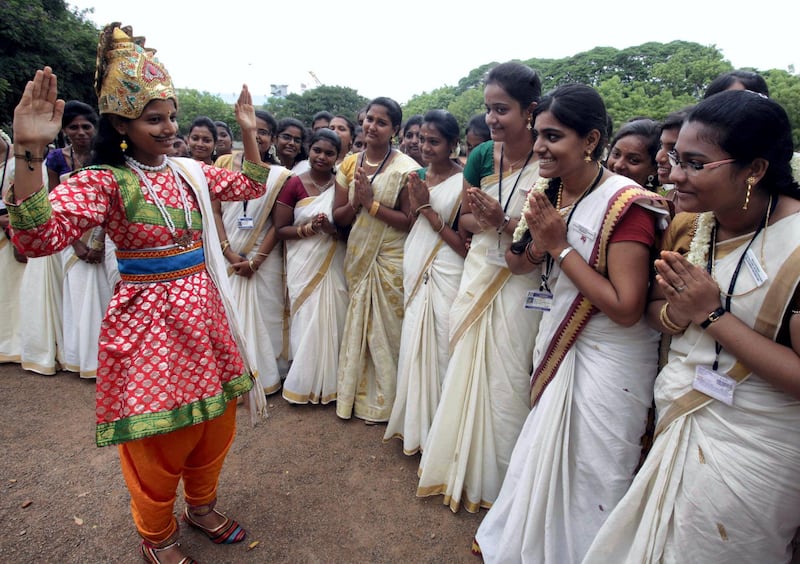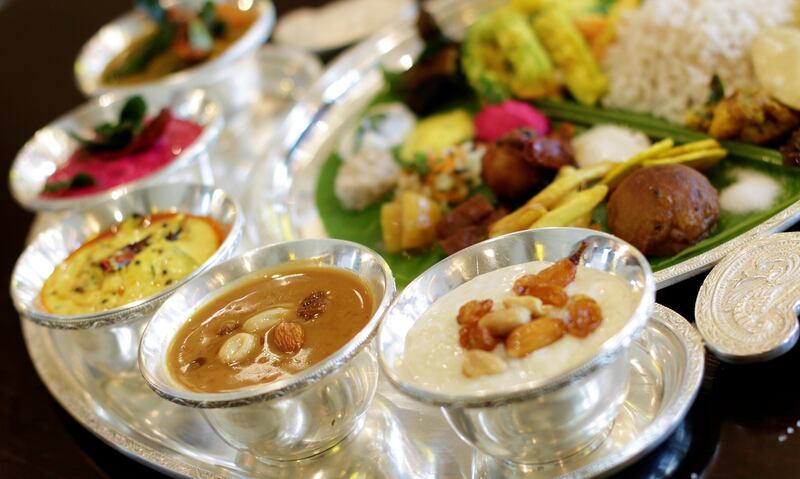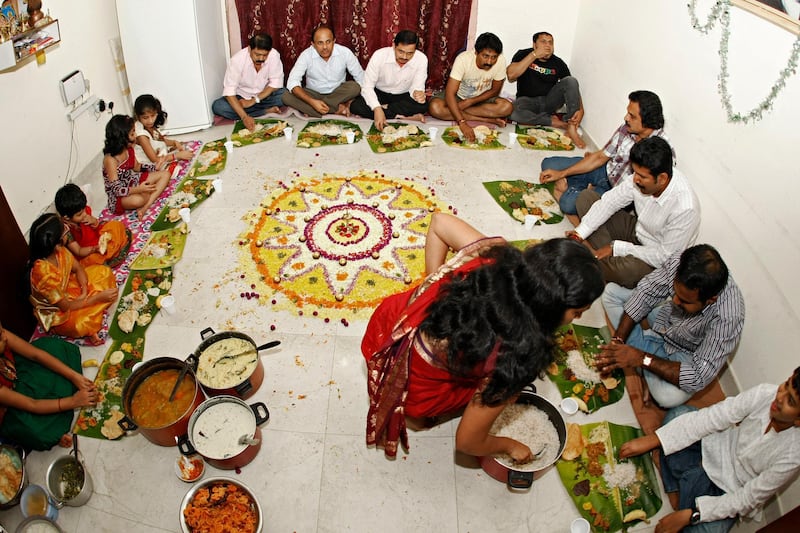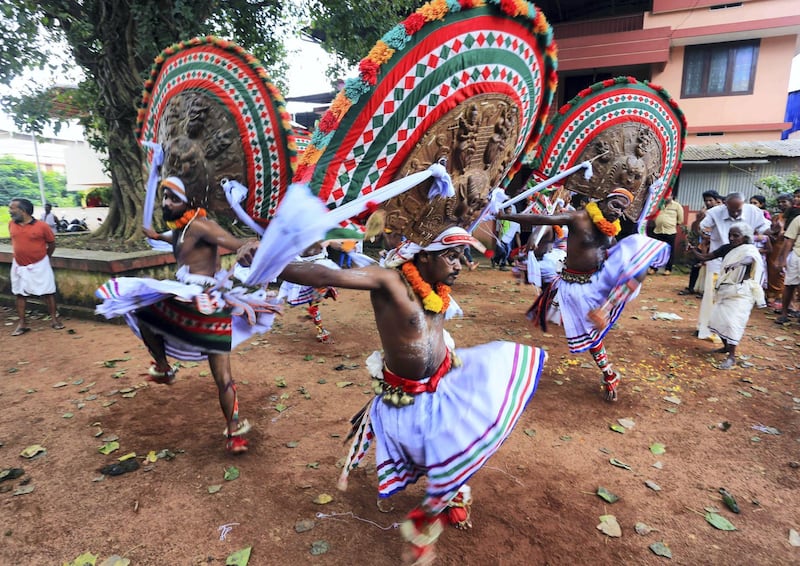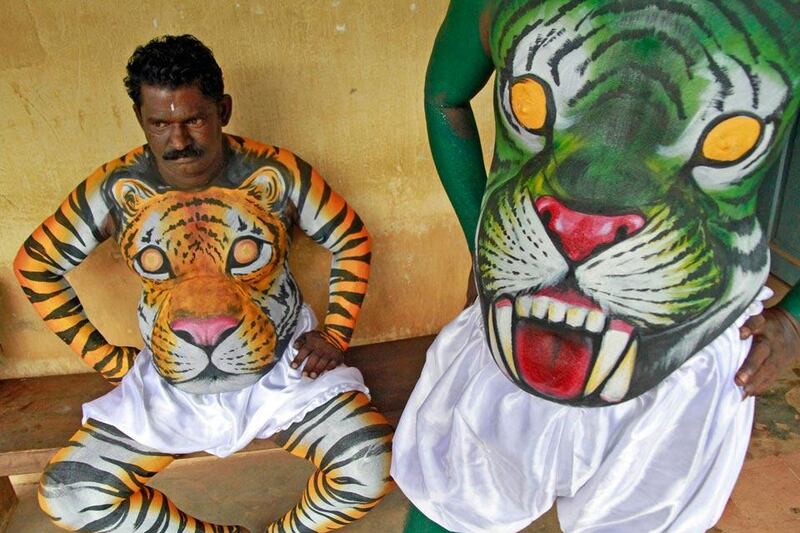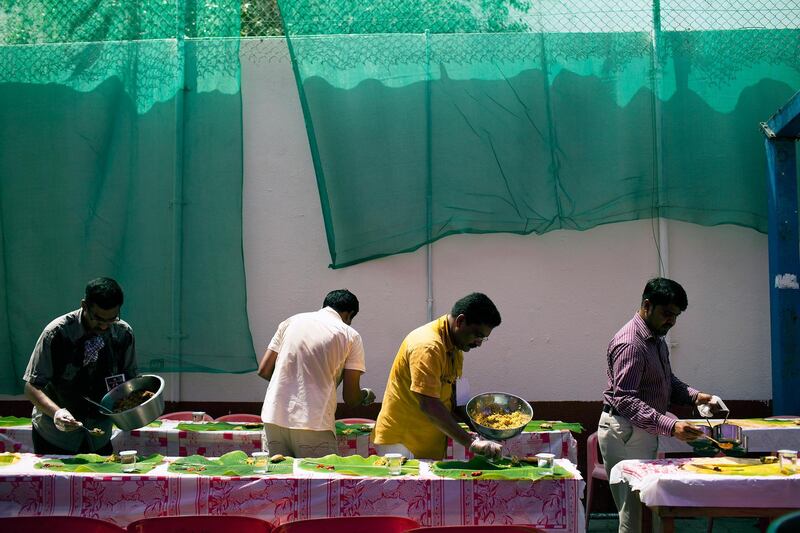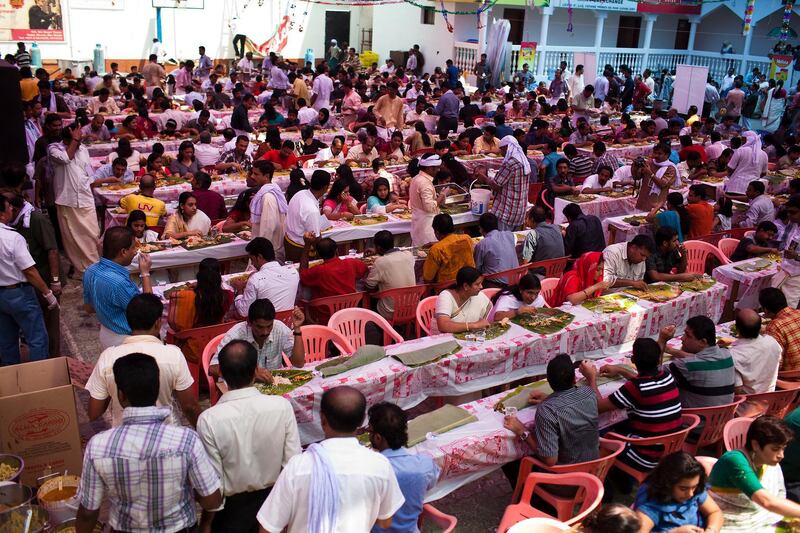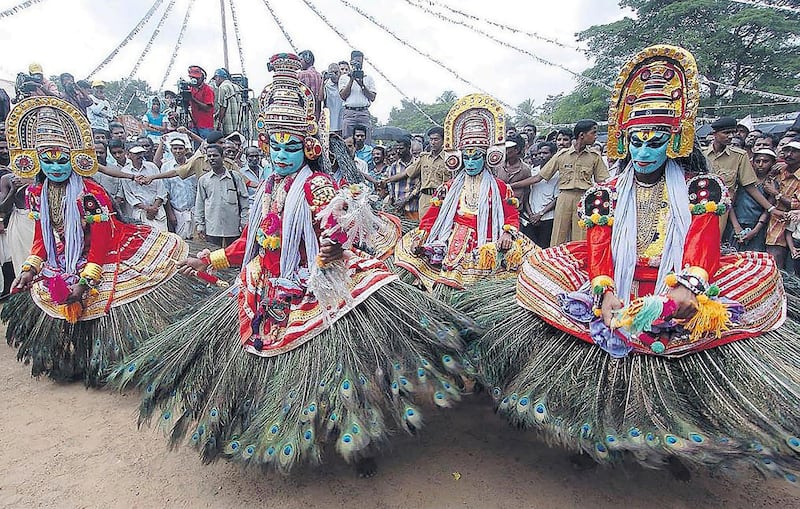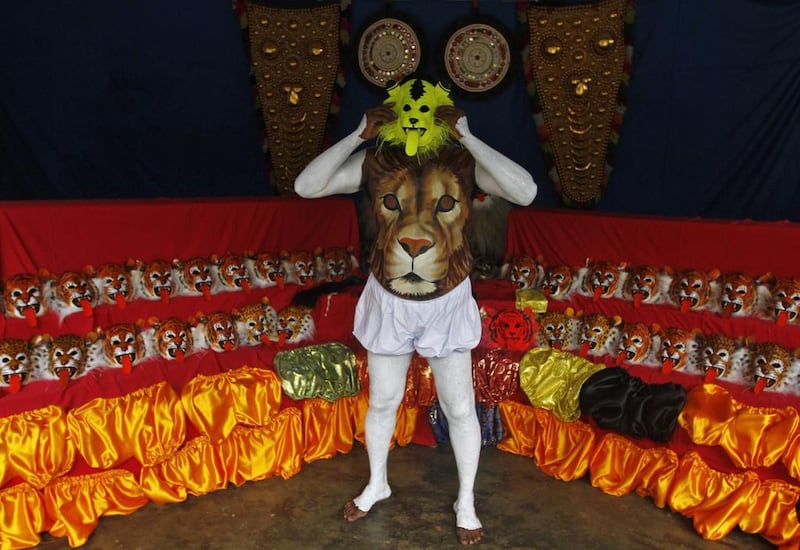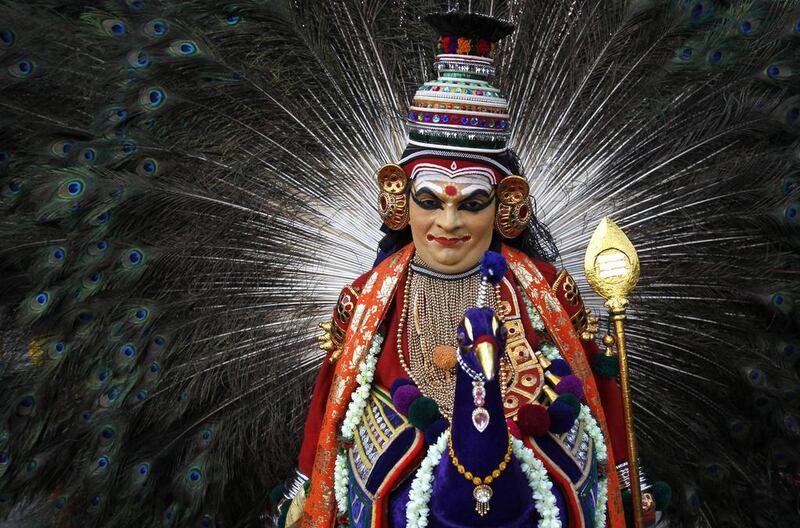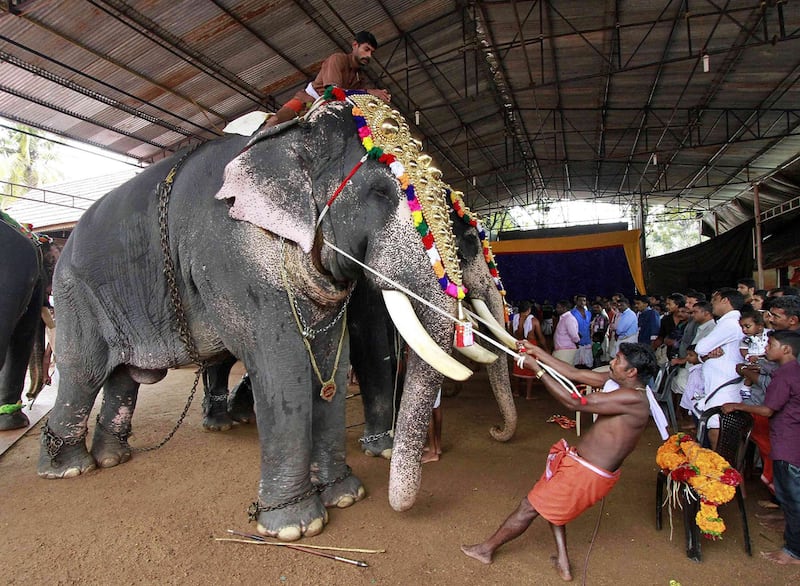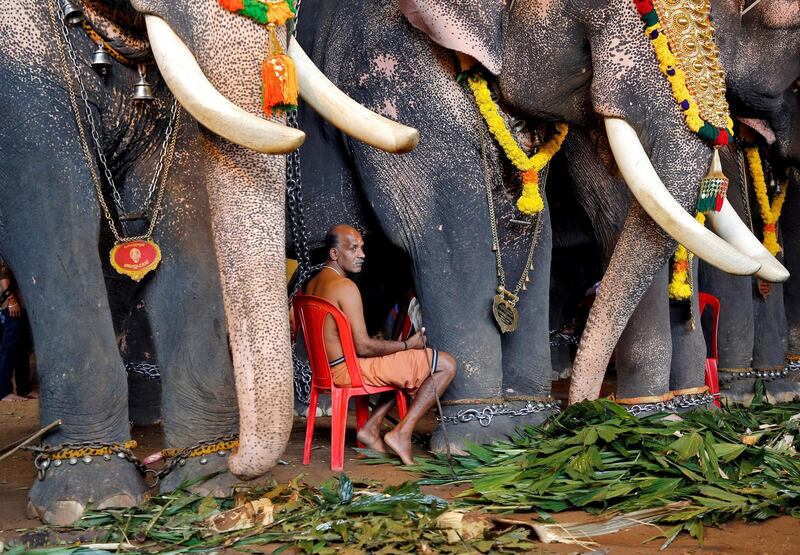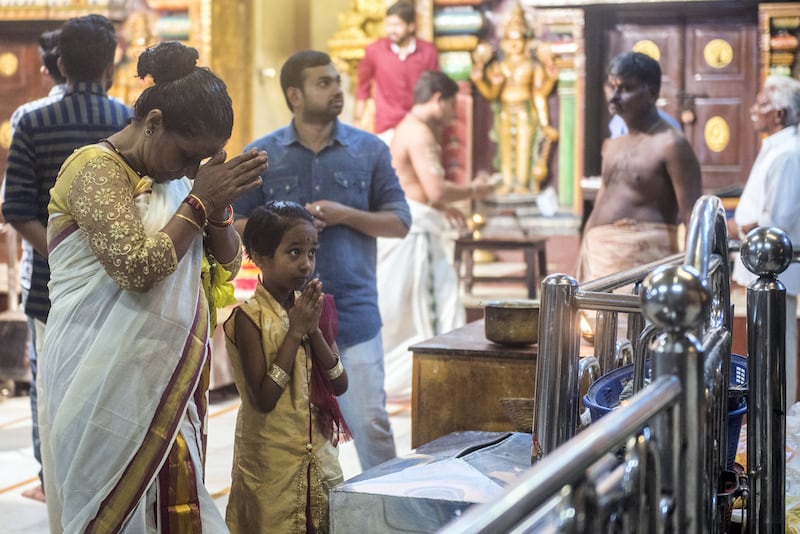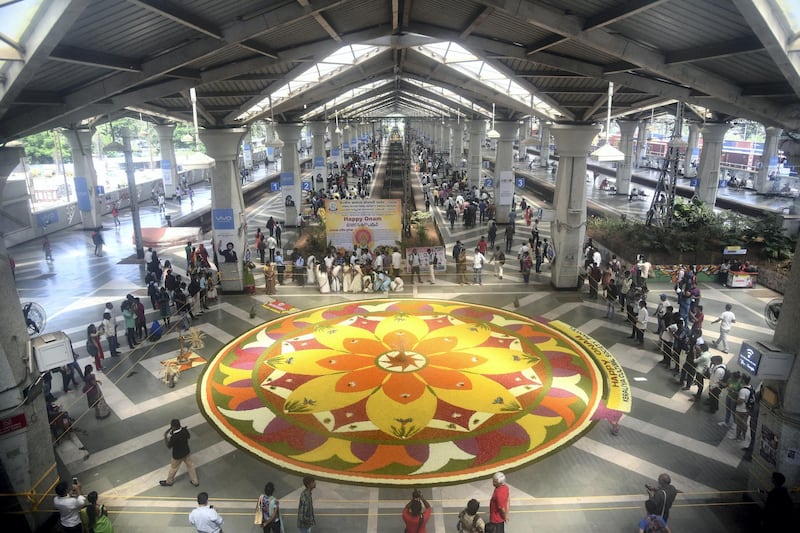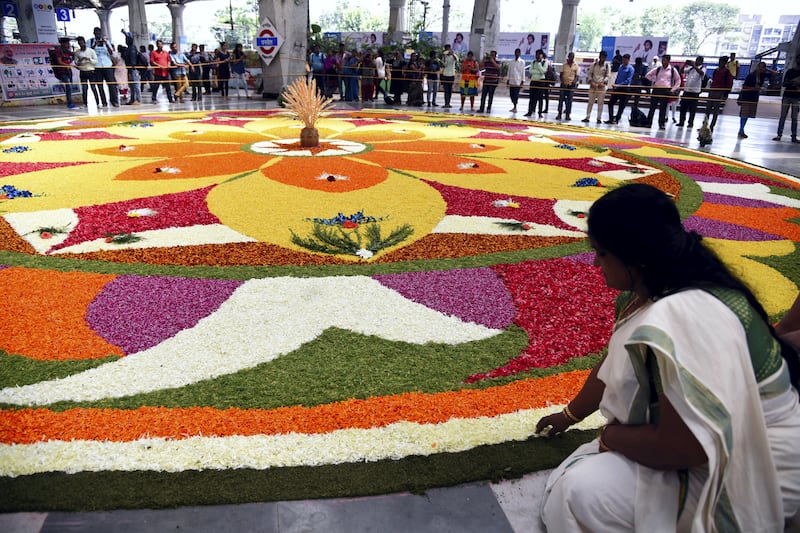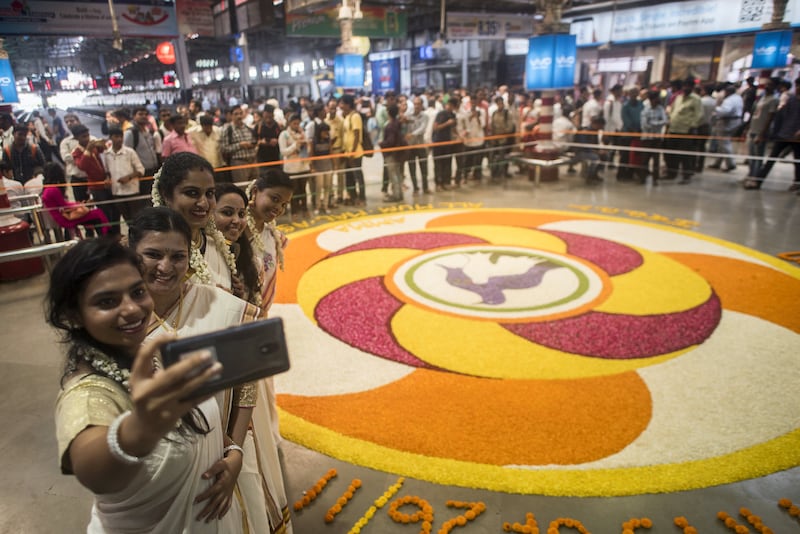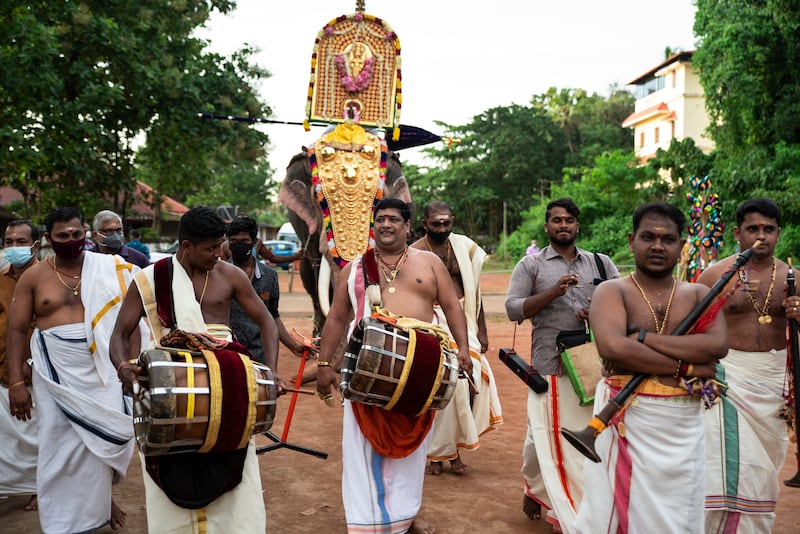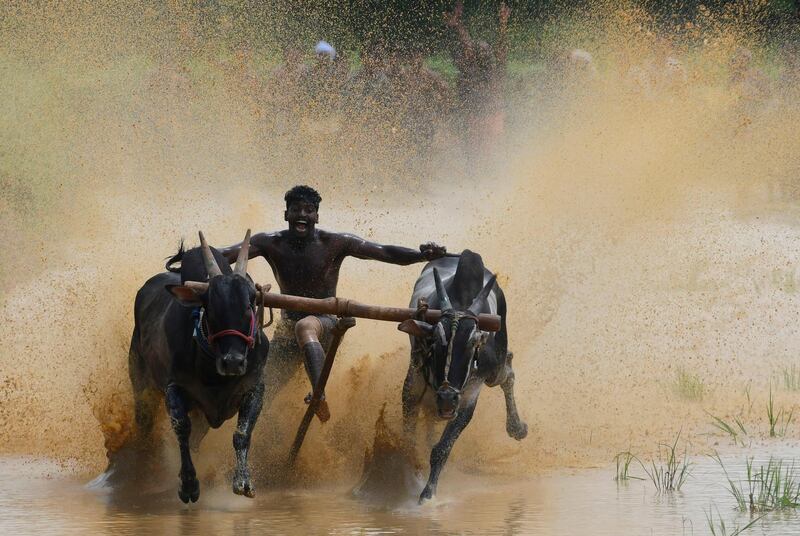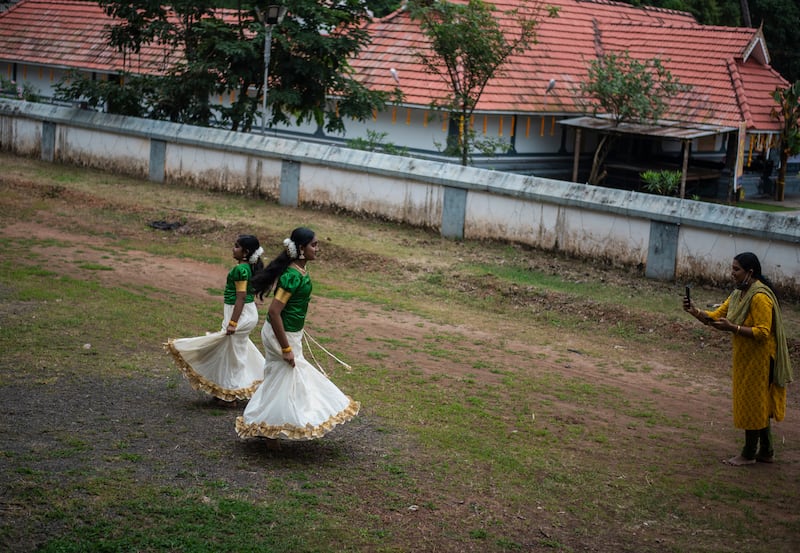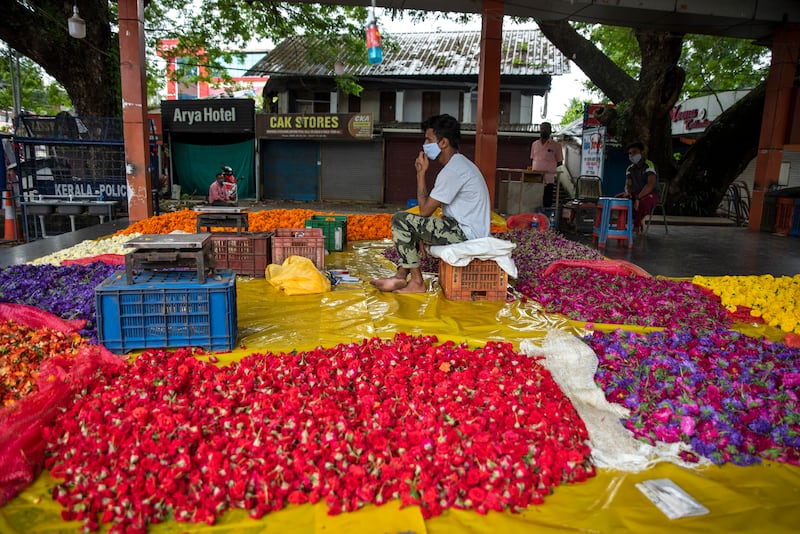Growing up in Delhi, I was only ever excited about celebrating three festivals every year: Holi, the festival of colours, best enjoyed with coloured powders, water guns and a feast of crispy pakoras; Diwali, the festival of lights, which meant new clothes and plenty of sweets, as well as dining and games with loved ones; and Eid, for all the kebabs, biriyanis and desserts our friends celebrating would invite us to feast on.
However, I don’t think I understood the magnitude a festive feast could reach until I celebrated my first Onam. Seven years ago, I married into a very different culture — my husband is from Kerala. While we are both Hindus, the traditions and celebrations of South India are very different from what I ever experienced living in my little North India bubble.
Celebrated over 10 days, Onam is the biggest festival in Kerala. Essentially a harvest festival, Onam honours the homecoming of the beloved King Mahabali.
A few years ago, I experienced my first Onam celebration in my husband's home town, Kannur.
It felt like Diwali in a lot of ways in terms of the funfairs, mega sales and festive atmosphere, but it was a far more intimate celebration than I am used to. We spent the first few days in the city shopping for clothes, snacks, sweetmeats and flowers, to make the pookkalam (a carpet-like decoration). Pookkalam is similar to the rangoli etched outside homes during Diwali, but this one is only made with fresh flowers and petals, as opposed to coloured powders.
We ate way too many snacks at the fairs, shopped for some knick-knacks for the house and I witnessed my first pulikali (which translates as “play of the tigers”), a dramatic folk dance, which is an intrinsic part of Onam festivities.
![Indian performers painted as tigers take part in the 'Pulikali', or Tiger dance, in Thrissur on September 7, 2017. - The folk-art event is held every year in the town during the 'Onam' festival. (Photo by ARUN SANKAR / AFP) / “The erroneous mention[s] appearing in the metadata of this photo by ARUN SANKAR has been modified in AFP systems in the following manner: [September 7, 2017] instead of [September 17, 2016]. Please immediately remove the erroneous mention[s] from all your online services and delete it (them) from your servers. If you have been authorized by AFP to distribute it (them) to third parties, please ensure that the same actions are carried out by them. Failure to promptly comply with these instructions will entail liability on your part for any continued or post notification usage. Therefore we thank you very much for all your attention and prompt action. We are sorry for the inconvenience this notification may cause and remain at your disposal for any further information you may require.”](https://thenational-the-national-prod.cdn.arcpublishing.com/resizer/v2/23FMZRQDGLC65ERGG5LDRL3ANE.jpg?smart=true&auth=7d90f960932765b28f1eb68914d2f84ee6e3663641a8613c9bac9c09226fe347&width=400&height=252)
The main day of the Onam celebrations started early, as prepping the sadya was an elaborate affair. It is a vegetarian feast served mainly at weddings and on Onam, featuring more than 25 dishes. My mother-in-law makes most of these from scratch, including the various lentil and legume preparations (parippu, sambar, erissery), vegetables (rasam, avial, olan, pulisseri, thoran, koottukari), yoghurt-based sides (pachadi, kaalan), red rice and payasam for dessert. To this we added a selection pickles, sweet and savoury banana chips (with bananas picked from the garden) and deep-fried poppadums.
It was no mean feat and it took three women nearly 12 hours to get everything ready. Before our guests arrived, my sister-in-law, niece and I went out to the veranda to make our little pookkalam, which was the most fun part of the day.
Our guests arrived to enjoy the feast even as we laid out the sadya and set freshly washed banana leaves in lieu of plates. The ladies wore white and gold saris and the men donned bright shirts and mundus, with greetings of “Onam ashamsakal” going around.
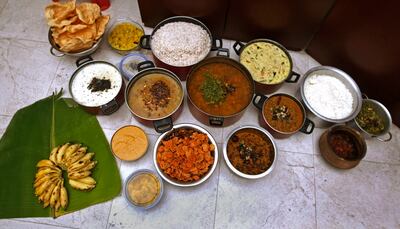
As my family sat down to finally enjoy the fruits of our labour, I realised although I may not fully understand what is being said around me, the joy of celebrating together transcends language.
In the UAE, our Onam celebrations are a bit quieter. While I do not have the culinary ability to take on the mammoth task of making the sadya, my husband and I always put on our traditional best, order classic dishes from one of the many Keralite restaurants in the capital (our top picks include Calicut Notebook, Payyannur Restaurant and Dine Out), and gather close friends — our family here — for a celebratory feast every year.
Scroll through the gallery below to see more from Onam festivities
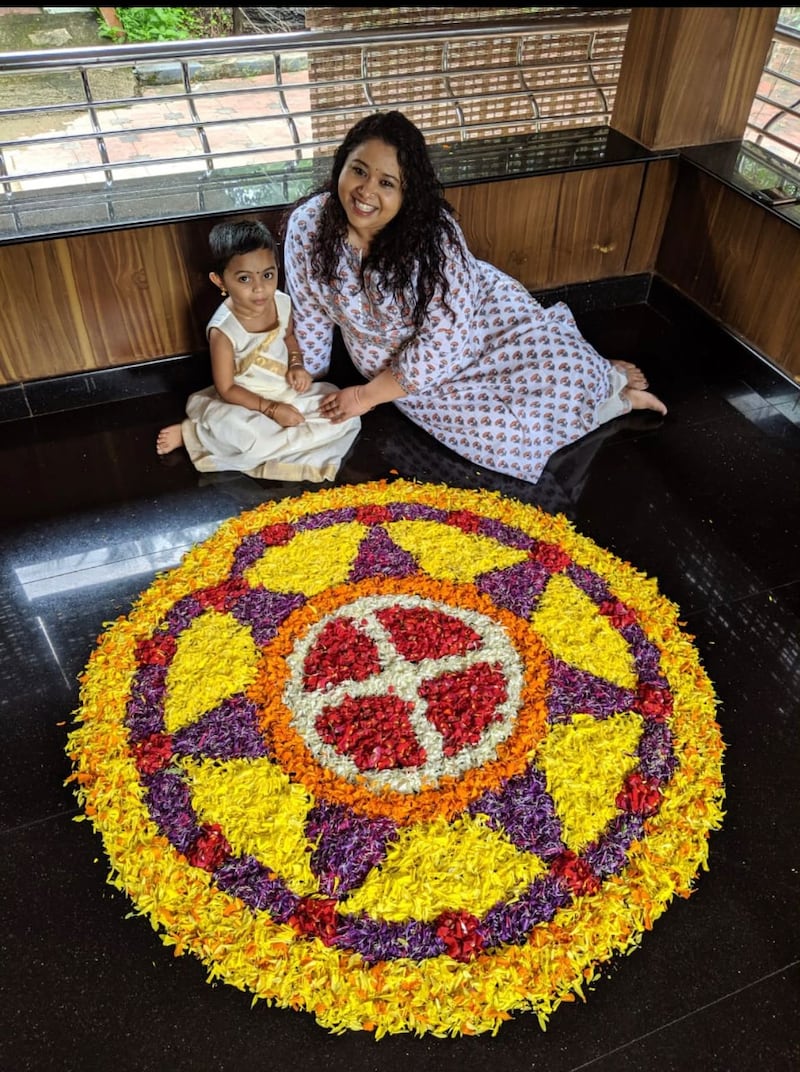

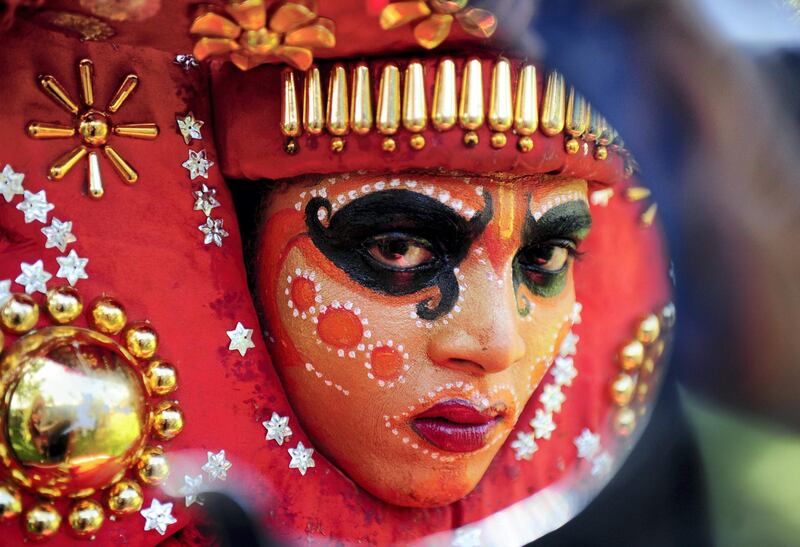
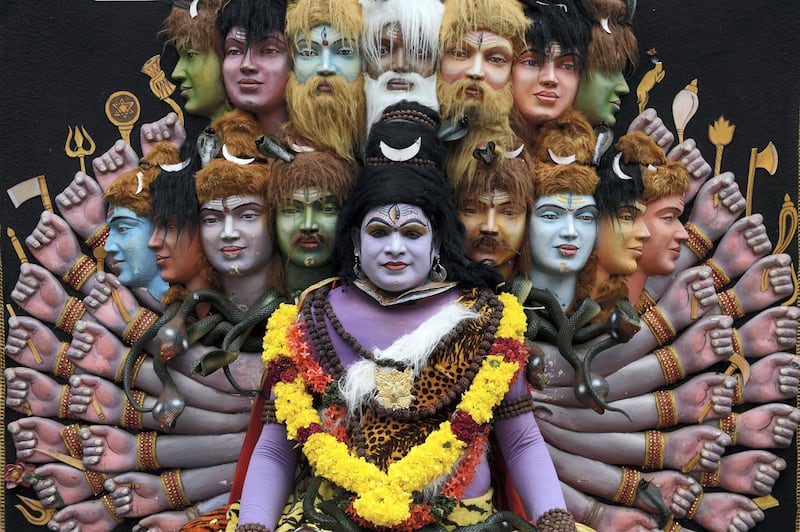
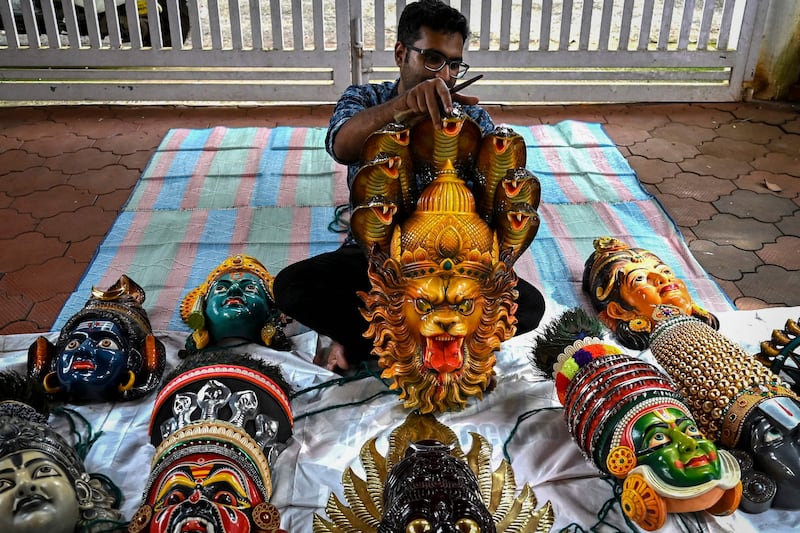
![Indian performers painted as tigers take part in the 'Pulikali', or Tiger dance, in Thrissur on September 7, 2017. - The folk-art event is held every year in the town during the 'Onam' festival. (Photo by ARUN SANKAR / AFP) / “The erroneous mention[s] appearing in the metadata of this photo by ARUN SANKAR has been modified in AFP systems in the following manner: [September 7, 2017] instead of [September 17, 2016]. Please immediately remove the erroneous mention[s] from all your online services and delete it (them) from your servers. If you have been authorized by AFP to distribute it (them) to third parties, please ensure that the same actions are carried out by them. Failure to promptly comply with these instructions will entail liability on your part for any continued or post notification usage. Therefore we thank you very much for all your attention and prompt action. We are sorry for the inconvenience this notification may cause and remain at your disposal for any further information you may require.”](https://thenational-the-national-prod.cdn.arcpublishing.com/resizer/v2/23FMZRQDGLC65ERGG5LDRL3ANE.jpg?smart=true&auth=7d90f960932765b28f1eb68914d2f84ee6e3663641a8613c9bac9c09226fe347&width=800&height=504)
